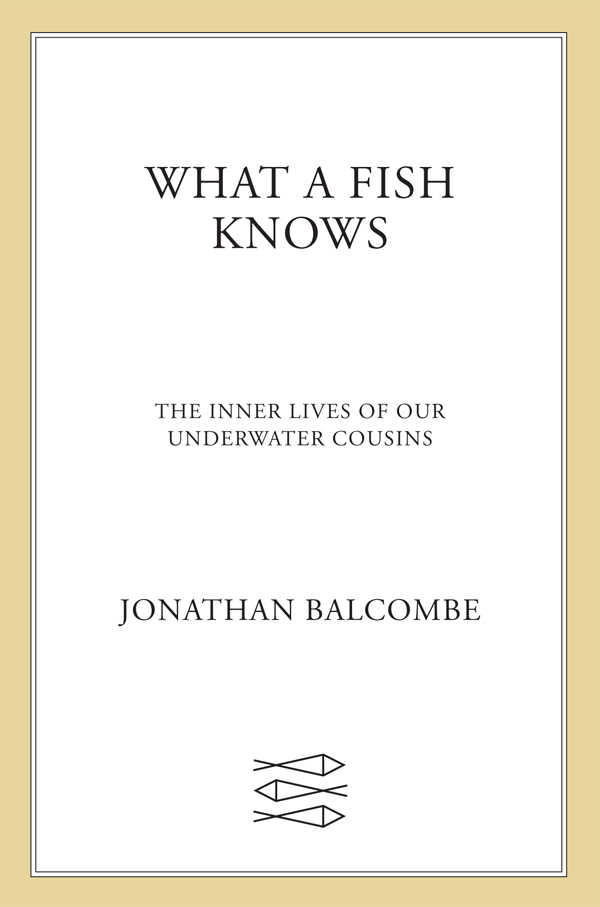Тревожное поколение. Как Великое подключение детства вызывает эпидемию душевных болезней - Джонатан Хайдт
Книгу Тревожное поколение. Как Великое подключение детства вызывает эпидемию душевных болезней - Джонатан Хайдт читаем онлайн бесплатно полную версию! Чтобы начать читать не надо регистрации. Напомним, что читать онлайн вы можете не только на компьютере, но и на андроид (Android), iPhone и iPad. Приятного чтения!
Шрифт:
Интервал:
Закладка:
Brady, W. J., Wills, J. A., Jost, J. T., Tucker, J. A., & Van Bavel, J. J. (2017). Emotion shapes the diffusion of moralized content in social networks. Proceedings of the National Academy of Sciences of the United States of America, 114 (28), 7313–7318. doi.org/10.1073/pnas.1618923114
Braghieri, L., Levy, R., & Makarin, A. (2022). Social media and mental health. American Economic Review, 112 (11), 3660–3693. doi.org/10.1257/aer.20211218
Brailovskaia, J., Krasavtseva, Y., Kochetkov, Y., Tour, P., & Margraf, J. (2022). Social media use, mental health, and suicide-related outcomes in Russian women: A cross-sectional comparison between two age groups. Women's Health, 18. doi.org/10.1177/17455057221141292
Brailovskaia, J., Meier-Faust, J., Schillack, H., & Margraf, J. (2022). A two-week gaming abstinence reduces internet gaming disorder and improves mental health: An experimental longitudinal intervention study. Computers in Human Behavior, 134. doi.org/10.1016/j. chb.2022.107334
Brand, B. L., Sar, V., Stavropoulos, P., Krüger, C., Korzekwa, M., Martínez-Taboas, A., & Middleton, W. (2016). Separating fact from fiction: An empirical examination of six myths about dissociative identity disorder. Harvard Review of Psychiatry, 24 (4), 257–270. doi.org/10.1097/hrp.0000000000000100
Brown, D. (1991). Human universals. McGraw-Hill.
Brunborg, G. S., Mentzoni, R. A., Melkevik, O. R., Torsheim, T., Samdal, O., Hetland, J., Andreassen, C. S., & Palleson, S. (2013). Gaming addiction, gaming engagement, and psychological health complaints among Norwegian adolescents. Media Psychology, 16 (1), 115–128. doi.org/10.1080/15213269.2012.756374
Brussoni, M., Gibbons, R., Gray, C., Ishikawa, T., Sandseter, E. B. H., Bienenstock, A., Chabot, G., Fuselli, P., Herrington, S., Janssen, I., Pickett, W., Power, M., Stanger, N., Sampson, M., & Tremblay, M. S. (2015). What is the relationship between risky outdoor play and health in children? A Systematic Review. International Journal of Environmental Research and Public Health, 12 (6), 6423–6454. doi.org/10.3390/ijerph120606423
Brussoni, M., Ishikawa, T., Brunelle, S., & Herrington, S. (2017). Landscapes for play: Effects of an intervention to promote nature-based risky play in early childhood centres. Journal of Environmental Psychology, 54, 139–150. doi.org/10.1016/j. jenvp.2017.11.001
Brussoni, M., Olsen, L. L., Pike, I., & Sleet, D. A. (2012). Risky play and children's safety: Balancing priorities for optimal child development. International Journal of Environmental Research and Public Health, 9 (9), 3134–3148. doi.org/10.3390/ijerph9093134
Buchholz, L. (2015). Exploring the promise of mindfulness as medicine. JAMA, 314 (13), 1327–1329. doi.org/10.1001/jama.2015.7023
Buliung, R. N., Mitra, R., & Faulkner, G. (2009). Active school transportation in the Greater Toronto Area, Canada: An exploration of trends in space and time (1986–2006). Preventive Medicine, 48 (6), 507–512. doi.org/10.1016/j. ypmed.2009.03.001
Bushman, B. J., & Huesmann, L. R. (2014). Twenty-five years of research on violence in digital games and aggression revisited. European Psychologist, 19 (1), 47–55. doi.org/10.1027/1016-9040/a000164
Buss, D. M. (2021). When men behave badly: The hidden roots of sexual deception, harassment, and assault. Little, Brown Spark.
Cai, J. Y., Curchin, E., Coan, T., & Fremstad, S. (2023, 30 марта). Are young men falling behind young women? The NEET rate helps shed light on the matter. Center for Economic and Policy Research. cepr.net/report/are-young-men-falling-behind-young-women-the-neet-rate-helps-shedlight-on-the-matter/
Carhart-Harris, R. L., Erritzoe, D., Williams, T., Stone, J. M., Reed, L. J., Colasanti, A., Tyacke, R. J., Leech, R., Malizia, A. L., Murphy, K., Hobden, P., Evans, J., Feilding, A., Wise, R. G., & Nutt, D. J. (2012). Neural correlates of the psychedelic state as determined by fMRI studies with psilocybin. Proceedings of the National Academy of Sciences, 109 (6), 2138–2143. doi.org/10.1073/pnas.1119598109
Carr, N. (2012). The shallows: What the internet is doing to our brains. W. W. Norton.
Casey, M., & Nzau, S. (2019, 11 сентября). The differing impact of automation on men and women's work. Brookings Institution. www.brookings. edu/articles/the-differing-impact-ofautomation-on-men-and-womens-work/Centers for Disease Control and Prevention. (n. d.). WISQARS fatal and nonfatal injury reports [Data set]. wisqars. cdc. gov/reports/
Centers for Disease Control and Prevention. (2015). School health policies and practices study 2014. www.cdc. gov/healthyyouth/data/shpps/pdf/shpps-508-final_101315. pdf
Chang, A. – M., Aeschbach, D., Duffy, J. F., & Czeisler, C. A. (2014). Evening use of light-emitting eReaders negatively affects sleep, circadian timing, and next-morning alertness. Proceedings of the National Academy of Sciences of the United States of America, 112 (4), 1232–1237. doi.org/10.1073/pnas.1418490112
Charlton, J. P., & Danforth, I. D. W. (2007). Distinguishing addiction and high engagement in the context of online game playing. Computers in Human Behavior, 23 (3), 1531–1548. doi.org/10.1016/j. chb.2005.07.002
Chatard, A., Bocage-Barthélémy, Y., Selimbegoviс, L., & Guimond, S. (2017). The woman who wasn't there: Converging evidence that subliminal social comparison affects self-evaluation. Journal of Experimental Social Psychology, 73, 1–13. doi.org/10.1016/j. jesp.2017.05.005
Chen, X., Li, M., & Wei, Q. (2019). Agency and communion from the perspective of self versus others: The moderating role of social class. Frontiers in Psychology, 10. doi.org/10.3389/fpsyg.2019.02867
Cohn, J. F., & Tronick, E. Z. (1987). Mother-infant face-to-face interaction: The sequence of dyadic states at 3, 6, and 9 months. Developmental Psychology, 23 (1), 68–77. doi.org/10.1037/0012-1649.23.1.68
Coleman, E., Radix, A. E., Bouman, W. P., Brown, G. R., De Vries, A. L., Deutsch, M. B., & Arcelus, J. (2022). Standards of care for the health of transgender and gender diverse people, version 8. International Journal of Transgender Health, 23 (sup1), S1–S259. doi.org/10.1080/26895269.2022.2100644
Common Sense Media. (n. d.). Parenting, media, and everything in between. Common Sense Media. www.commonsensemedia.org/articles/social-media
Conner, J. O., Crawford, E., & Galioto, M. (2023). The mental health effects of student activism: Persisting despite psychological costs. Journal of Adolescent Research, 38 (1), 80–109. doi.org/10.1177/07435584211006789
Conze, E. (1954). Buddhist texts through the ages. Philosophical Library.
Cosma, A., Stevens, G., Martin, G., Duinhof, E. L., Walsh, S. D., Garcia-Moya, I., KöltO", A., Gobina, I., Canale, N., Catunda, C., Inchley, J., & de Looze, M. (2020). Cross-national time trends in adolescent mental well-being from 2002 to 2018 and the explanatory role of schoolwork pressure. Journal of Adolescent Health, 66 (6S), S50 – S58. doi.org/10.1016/j. jadohealth.2020.02.010
Council on Communications and Media. (2016). Media and young minds. Pediatrics, 138 (5), Article e20162591. doi.org/10.1542/peds.2016–2591
Cox, D. A. (2021, June 29). Men's social circles are shrinking. Survey Center on American Life. www.americansurveycenter.org/why-mens-social-circles-are-shrinking/
Coyne, S. M., Hurst, J. L., Dyer, W. J., Hunt, Q., Schvanaveldt, E., Brown, S., & Jones, G. (2021). Suicide risk in emerging adulthood: Associations with screen time over
Прочитали книгу? Предлагаем вам поделится своим отзывом от прочитанного(прослушанного)! Ваш отзыв будет полезен читателям, которые еще только собираются познакомиться с произведением.
Уважаемые читатели, слушатели и просто посетители нашей библиотеки! Просим Вас придерживаться определенных правил при комментировании литературных произведений.
- 1. Просьба отказаться от дискриминационных высказываний. Мы защищаем право наших читателей свободно выражать свою точку зрения. Вместе с тем мы не терпим агрессии. На сайте запрещено оставлять комментарий, который содержит унизительные высказывания или призывы к насилию по отношению к отдельным лицам или группам людей на основании их расы, этнического происхождения, вероисповедания, недееспособности, пола, возраста, статуса ветерана, касты или сексуальной ориентации.
- 2. Просьба отказаться от оскорблений, угроз и запугиваний.
- 3. Просьба отказаться от нецензурной лексики.
- 4. Просьба вести себя максимально корректно как по отношению к авторам, так и по отношению к другим читателям и их комментариям.
Надеемся на Ваше понимание и благоразумие. С уважением, администратор knigkindom.ru.
Оставить комментарий
-
 Ариэль летит24 декабрь 21:18
А в этой книге открываются такие интриги, такие глубины грязной политики, и как противостояние им- вечные светлые истины, такие,...
Сеятели ветра - Андрей Васильев
Ариэль летит24 декабрь 21:18
А в этой книге открываются такие интриги, такие глубины грязной политики, и как противостояние им- вечные светлые истины, такие,...
Сеятели ветра - Андрей Васильев
-
 Гость Екатерина24 декабрь 15:37
Очень юморная книга. Спасибо автору...
Жена с татуировкой дракона - Кристина Юрьевна Юраш
Гость Екатерина24 декабрь 15:37
Очень юморная книга. Спасибо автору...
Жена с татуировкой дракона - Кристина Юрьевна Юраш
-
 Нинель24 декабрь 12:30
Хорошая история, душевная, практически реальная, веришь автору, что так и было...хочу такого же Макса, просто до мурашек... Но,...
Проще, чем кажется - Юлия Устинова
Нинель24 декабрь 12:30
Хорошая история, душевная, практически реальная, веришь автору, что так и было...хочу такого же Макса, просто до мурашек... Но,...
Проще, чем кажется - Юлия Устинова










